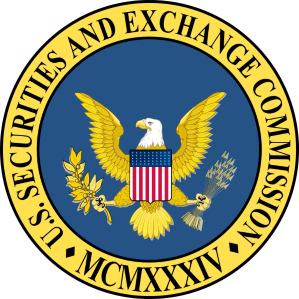TRANSPARENCY
Transparency regarding Sustainability initiatives and progress is increasingly essential for all enterprises as Environmental, Social and Governance awareness takes root and stakeholders demand more.
Organizations have to demonstrate accountability to people and the planet as well as generating profits.
The Stanwork Group is resourced to assist clients with reporting accordingly.
SUSTAINABILITY REPORTING
In order to manage sustainability initiatives with clear metrics, and build trust with stakeholders regarding progress on sustainable business practices, organizations have to be able to measure and report consistent and comparable information regarding various sustainability and financial measures.
Sustainability Reporting has been guided for years, however, by an alphabet soup of differing standards with similar disclosure requirements but varying formats. The variety of sustainability frameworks and standards has caused a lack of consistency in reporting.
That is now changing.
 At the 26th annual Conference of Parties (COP26) meeting in Glasgow in November 2021 convened to monitor and review the implementation of the United Nations Framework Convention on Climate Change (UNFCC), there were three major developments announced by the International Financial Reporting Standards (IFRS) Foundation to enhance, streamline and standardize Sustainability Reporting
At the 26th annual Conference of Parties (COP26) meeting in Glasgow in November 2021 convened to monitor and review the implementation of the United Nations Framework Convention on Climate Change (UNFCC), there were three major developments announced by the International Financial Reporting Standards (IFRS) Foundation to enhance, streamline and standardize Sustainability Reporting
Formation of the International Sustainability Standards Board (ISSB)
Develop a comprehensive global baseline of high-quality sustainability reporting standards, as there are for financial reporting
Commitment by Sustainability-focused disclosure standards organizations to consolidate into ISSB
By June 2022, the Climate Disclosure Standards Board (CDSB) and the Value Reporting Foundation (VRF) which was itself formed by the merger last year of International Integrated Reporting Council (IIRC) and the Sustainability Accounting Standards Board (SASB)
Publication of prototype climate and general disclosure requirements as foundational elements of ISSB
Joint work by the CDSB, International Accounting Standards Board (IASB) Task Force on Climate Related Financial Disclosures (TCFD), the VRF, and the World Economic Forum (WEF), with support from the International Organization of Securities Commissions (IOSCO)
PROTOTYPE GENERAL REQUIREMENTS FOR DISCLOSURE
APPLYING CONCEPTUAL ELEMENTS
Materiality
Reporting entity’s boundary
Connectivity
GENERAL FEATURES
Governance
Strategy
Risk management
Metrics and targets
Comparative information
Frequency of reporting
Reporting channel
Identifying related financial statements
Using financial data and assumptions
Fair presentation
Sources of estimation and outcome uncertainty
Errors
Statement of compliance
PROTOYPE CLIMATE RELATED DISCLOSURE REQUIREMENTS
GOVERNANCE, STRATEGY, RISK MANAGEMENT, and
METRICS AND TARGETS
Cross-industry metrics:
- Greenhouse gas emissions, Scope 1, 2, 3
- Transition risks—amount and percentage of assets or business activities
- Physical risks—amount and percentage of assets or business activities
- Climate-related opportunities—proportion of revenue, assets or activities as an amount or as a percentage
- Capital deployment— capital expenditure, financing or investment deployed toward climate
- Internal carbon prices—price for metric ton of greenhouse gas emissions used internally, and how: investment decisions, transfer pricing, and scenario analysis; CO2 equivalent
- Remuneration—the proportion of executive management remuneration affected by climate-related considerations
SEC Proposed Rules Regarding Climate Change Impact Disclosures
 On March 21, 2022, the Securities and Exchange Commission (SEC) proposed rule changes requiring the inclusion of material climate-related disclosures in their registration documents and periodic filings. The comment period for the proposed rules ends May 20, 2022, after which it will likely take the rest of the year before the SEC finalizes the rules. If finalized by Dec 31, 2022, the rules are expected to apply to filings for FY 2023 beginning in 2024 according to a schedule determined by the registrant’s category.
On March 21, 2022, the Securities and Exchange Commission (SEC) proposed rule changes requiring the inclusion of material climate-related disclosures in their registration documents and periodic filings. The comment period for the proposed rules ends May 20, 2022, after which it will likely take the rest of the year before the SEC finalizes the rules. If finalized by Dec 31, 2022, the rules are expected to apply to filings for FY 2023 beginning in 2024 according to a schedule determined by the registrant’s category.
Establishing Effective Governance over ESG Reporting
ESG Reporting has reached the point of practical necessity requiring the same level of rigor as Financial Reporting. Stakeholders demand it now while several jurisdictions have established regulatory requirements already and most of the remaining are in the process of doing so.

Establishing effective governance over ESG Reporting can be established through an iterative program with the following key actions:
- Materiality or Risk Assessment – which ESG Topics are relevant
- Board Oversight of Material Matters
- Integrate ESG Topics into Enterprise Risk Management
- Integrate ESG Matters into Company Strategy
- Implement Internal Control over ESG Data Collection, Processing and Reporting
